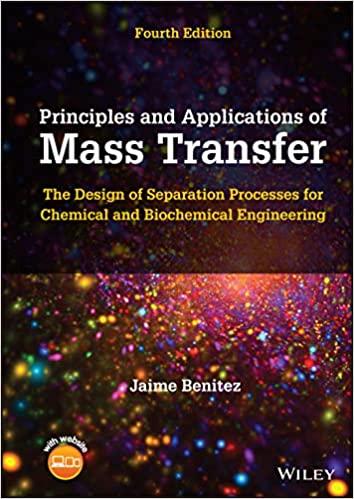A vessel $2.0 mathrm{~m}$ in diameter and $2.0-mathrm{m}$ deep (measured from the gas sparger at the bottom
Question:
A vessel $2.0 \mathrm{~m}$ in diameter and $2.0-\mathrm{m}$ deep (measured from the gas sparger at the bottom to liquid overflow at the top) is to be used for stripping chlorine from water by sparging with air. The water will flow continuously downward at the rate of $7.5 \mathrm{~kg} / \mathrm{s}$ with an initial chlorine concentration of $5 \mathrm{mg} / \mathrm{L}$. Airflow will be $0.22 \mathrm{~kg} / \mathrm{s}$ at $298 \mathrm{~K}$. The sparger is in the form of a ring, $25 \mathrm{~cm}$ in diameter, containing 200 orifices, each $3.0 \mathrm{~mm}$ in diameter. The Henry's law constant for chlorine in water at this temperature is $0.11 \mathrm{kPa} \cdot \mathrm{m}^{3} / \mathrm{mol}$ (Perry and Chilton, 1973). The diffusivity of chlorine at infinite dilution in water at $298 \mathrm{~K}$ is $1.25 \times 10^{-5} \mathrm{~cm}^{2} / \mathrm{s}$ (Cussler, 1997).
(a) Assuming that all the resistance to mass transfer resides in the liquid phase, estimate the chlorine removal efficiency achieved.
(b) Estimate the power required to operate the air compressor if the mechanical efficiency of the system is $65 \%$.
Step by Step Answer:






